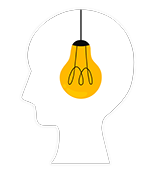I used to think stress was just part of life — like traffic in Los Angeles, or too many emails in your inbox. Annoying. Unavoidable. Definitely out of my control. For me, it showed up fast, manifesting as a pounding heart, clenched jaw, and overheated body. Before I even realized what was happening, I’d be snapping at my loved ones and mentally spiraling into worst-case scenarios.
Then someone taught me a meditation technique that takes just 48 seconds — less than a minute to go from “I can’t handle this” to “I’ve got this.”
At first, I thought there was no way it could be effective. How could something so quick reset the stress that had been running my life? But when I tried it, my body shifted almost instantly.
Most people are skeptical at first — I was too. But here’s the science behind it: When you’re stressed, your breathing becomes short and shallow, which tells your body there’s danger. By slowing your breath and making it deeper, you stimulate the vagus nerve — the communication highway between your body and brain. This lowers cortisol, slows your heart rate, and improves oxygen flow to your brain. In under a minute, your whole system shifts from red alert to recovery mode.
A quick and easy breathwork exercise
Here’s how it works:
- Inhale through your nose for 4.
- Hold for 4.
- Exhale slowly for 4.
- Hold again for 4.
That’s one round — 16 seconds. (This technique is often called “box breathing,” since each of the four parts of the pattern is the same length.) Do it three times in a row, and you’ve given yourself 48 seconds to reset.
It sounds almost too simple, like a wellness hack you’d scroll past on Instagram. But the moment you do it, your nervous system gets the signal: We’re safe. Your fight-or-flight response calms, and your body shifts into rest-and-reset mode.
Why a box breathing exercise works
This isn’t meditation magic: It’s biology. When stress hits, your sympathetic nervous system jumps in — the part wired to fight, run, or freeze. Helpful if you’re fighting for your life, not so helpful when you’re battling your inbox.
The 48-second breath hands the controls back to your parasympathetic nervous system, your built-in relaxation response. By stretching out both the inhale and exhale, you’re telling your body Stand down, we’re OK.
It’s so effective that Navy SEALs use this exact practice to stay calm under extreme pressure. I first learned it from davidji — one of the great modern meditation teachers — and the impact was so immediate, I filmed him teaching it and put that video on the Unplug app, so anyone can access it anytime they need it.
When to use this breathing exercise
I reach for this “reset button” all the time:
- Before walking on stage for a big talk
- When my kids are testing my patience (and winning)
- Every time I walk through a doorway
- Before bed, when my brain won’t turn off
I also teach it in corporate workshops. I’ll start by stressing everyone out a little — like asking them to imagine their Wi-Fi crashing mid-meeting. You can see the panic on their faces. Then we do three rounds of the 48-second breath. Afterward I ask, “Did you think about that stressful thought while we were breathing?” The answer is always no. “Do you feel more relaxed?” Always yes.
Why? Because it interrupts the stress loop. You can’t count, breathe, and stress at the same time. Once you break that cycle, you have the power to pause and make better choices instead of reacting in ways you’ll regret.
Learning this technique didn’t just help me manage stress — it changed the course of my life.
Back in 2010, I was a fashion editor, racing through deadlines at Vogue and Glamour, juggling three kids, and living in a constant state of hurry. Meditation wasn’t on my radar. It was my mother-in-law, a psychotherapist, who first told me I needed to slow down and take a breath.
One conscious breath led me to a bigger realization: Meditation isn’t about escaping life, it’s about handling life better. That thought pushed me to open Unplug — the first secular, drop-in meditation studio in Los Angeles — and later launch the Unplug app. My mission was (and still is) to make meditation so simple and modern that even the busiest skeptic can do it — and feel the benefits right away.
How quick meditation can still have impact
The number one reason people tell me they don’t meditate? “I don’t have time.” I get it. Back in my editor days, I didn’t think I had time either.
Here’s the truth: You don’t need an hour. You don’t even need 20 minutes. Science shows that short bursts of meditation can lower blood pressure, reduce stress, and improve focus. In fact, consistency beats length every time.
That’s why most meditations on our app are 5–10 minutes. It’s better to finish wanting more than to burn out and never come back. I designed it for people like me — with zero free time, but desperate for relief.
So let’s test this short routine together right now. Wherever you are:
- Inhale through your nose for 4.
- Hold for 4.
- Exhale slowly for 4.
- Hold for 4.
That’s one round. Do it three times — 48 seconds. Notice what shifted. Maybe your shoulders dropped, maybe your thoughts quieted, or maybe you feel even 1% less stressed. That’s the power of this practice. And you can do it anytime, anywhere.
Stress is optional — and so is your reaction to it
Life will always throw you curveballs: inbox overload, broken plans, traffic jams. But how we react — and how long we carry that stress — doesn’t have to be automatic.
Forty-eight seconds won’t solve every problem, but they’ll give you the space to respond instead of react. Build tiny tools like this into your day and you’ll realize you’re steadier, stronger, and more capable than you think.
Stress isn’t going away. But your reaction to it can change — in as little as 48 seconds.
Suze Yalof Schwartz is a meditation and wellness expert, global speaker, and the founder and CEO of Unplug, the world’s first secular meditation studio and the Unplug app. She has taught over one million people to meditate and is the author of Unplug: A Simple Guide to Meditation for Busy Skeptics and Modern Soul Seekers.









